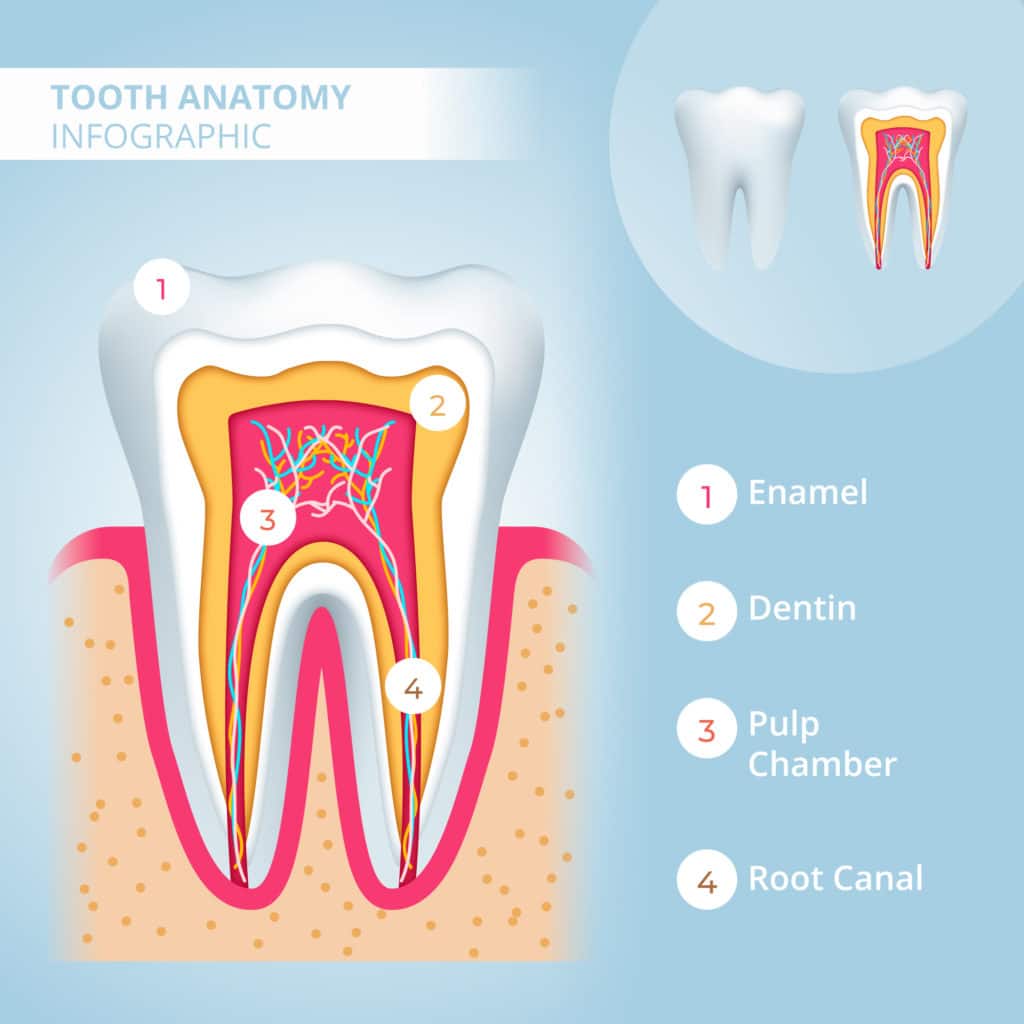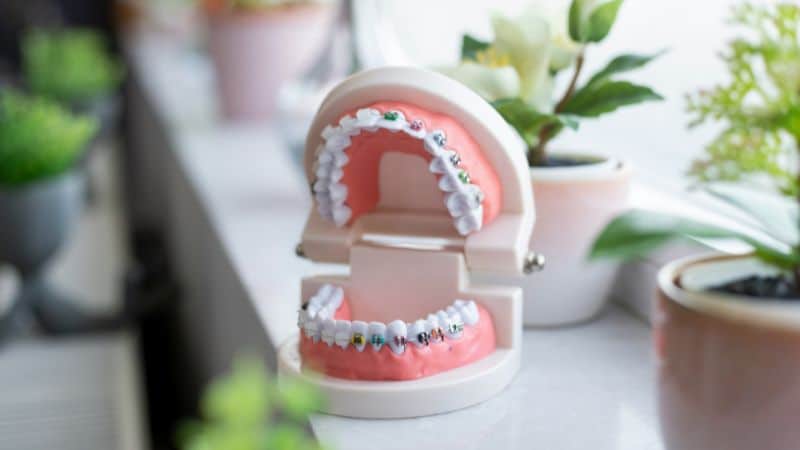
Everything You Need to Know About Root Canal Treatment
Root canal treatment may seem like a scary term, but it doesn’t have to be. We think that much of the fear associated with this dental procedure comes from misinformation.
What is important to know is that root canal treatments can relieve pain and protect your overall dental health. In addition, new techniques have been developed to allow dentists to perform more precise and comfortable root canal treatments.
To make you more comfortable with your next root canal treatment and to answer some of the questions you might have, we invite you to read on to learn more about root canal treatments.
What is a Root Canal?
To understand what is a root canal treatment, you must first understand the anatomy of a tooth. A tooth is composed of white enamel, visible to the eye, a hard layer called the dentin and soft tissue called the pulp.
The root of a tooth lies below the surface, in the gums. As part of the root, the root canal contains pulp tissue which consists of blood vessels, nerves, and connective tissue. The pulp is important during a tooth’s growth and development. However, a fully mature tooth can survive without the pulp.
Since the root canal is protected by the tooth’s enamel and dentin, any damage to these layers of the tooth can allow bacteria into the root canal which can lead to an infection.
When a tooth becomes infected, you may need a root canal treatment. A root canal procedure involves removing infected or inflamed pulp tissue in the root canal, cleaning and shaping the inside of the root canal and filling and sealing the canal and the tooth back up to prevent more bacteria from making its way into the tooth.

If you’re going to get a root canal, you can expect your dentist to take the following root canal treatment steps:
- Examine and x-ray the tooth to determine if a root canal treatment is needed.
- Numb the tooth so that you can’t feel any pain it might cause.
- Use a protective covering to protect the rest of the mouth during the root canal.
- Make an opening in the tooth to access the root canal.
- Remove the infected tissues and clean the tooth.
- Fill the tooth with a biocompatible dental substance to protect it.
- Use a temporary filling to protect the tooth while it heals.
- Have the patient return to remove the filling and install a dental crown.
While this process may sound intimidating, root canal treatments provide significant relief to patients, who are experiencing pain from their infected tooth. The procedure itself should not be painful.
How Do You Know If You Need a Root Canal Treatment?
You’ll want to see a dentist to confirm whether you need a root canal treatment or not. However, you can get an idea of whether you might need a root canal from reflecting on your dental symptoms. Root canals are most often used to heal infected teeth. So, symptoms of an infected tooth may indicate that you need a root canal. These root canal symptoms might include:
- Pain, minor or severe
- Swelling in the mouth or gums
- Sensitivity to hot and cold
- Sensitivity when opening your mouth
- Pressure or pain when chewing
- Tooth discoloration
- Chipped, broken or cracked tooth
- Bone loss
- Headache
- Sinus congestion
- Gum disease issues
Are There Alternatives to Root Canals?
Depending on the extent of your tooth infection or other dental issues, you may be able to avoid a root canal procedure. Here are some options that you can explore with your dentist:
- Tooth extraction and implantation: A tooth may be too infected to save with a root canal. In this case, we will extract the tooth and replace it with an implant. This is a more involved procedure, and it means you will lose your original tooth, so most people prefer to opt for a root canal, when possible.
- Extraction and bridge denture: If we extract your tooth, we may be able to use a bridge denture instead of an implant to replace the infected tooth. The bridge anchors the new tooth to its neighbours, so that it has the support it needs to stay in place.
How Long Does a Root Canal Take?
In general, you can expect to set aside an hour and a half for the procedure. However, we can tell you more specifically how long the procedure will last once we understand your specific case. It may take less time if your root canal treatment applies to one tooth only or more if you have more than one tooth involved.
Can You Eat After a Root Canal Treatment?
Typically, you can eat food after a root canal. However, you may have some lingering sensitivity when you’re eating, so it’s a wise idea to choose gentle foods that don’t require much chewing. Soups and smoothies are great options.
Most people will also be able to handle soft foods that need some chewing, such as bread and pasta. However, depending on the other procedures you get done, you may need to wait to eat. If you can’t eat after your specific dental treatment, we will let you know.
How Much Does a Root Canal Cost?
It’s challenging to give you an idea of how much a root canal will cost without knowing the specifics of your case. We can tell you exactly how much your procedure will cost before we get started, and provide details on payment options at that time.
You Can Receive Root Canal Treatments in the West Island
If you’re in the West Island and looking for a root canal treatment, contact us at Centre Dentaire Pierrefonds. We will provide you with extensive information on our root canal treatments and procedures. Schedule your dental appointment today.




